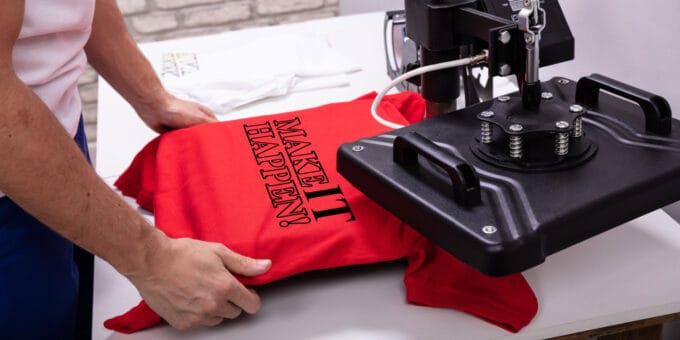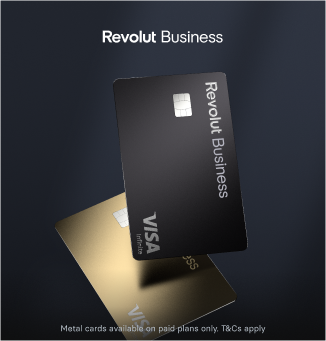In recent years, print-on-demand has transformed from a relatively unknown business concept to a multi-billion dollar global industry.
With today’s consumers increasingly seeking unique products and personalisation, the market has seen an enormous surge that shows no sign of slowing.
In this guide, we’ll explore everything you need to know about setting up your own print-on-demand business. Let’s get started.
What is print-on-demand?
Print-on-demand (often shortened to POD) allows entrepreneurs to create and sell custom-designed products via a low-risk and cost-effective business model.
As a form of dropshipping, POD means you’re responsible for the creation of the design, choosing which products to print on, and listing the items for sale.
The logistics of printing and shipping are then taken care of by a third-party supplier, bypassing the time and investment associated with managing inventory and manufacturing yourself – making it an ideal startup for home-based entrepreneurs and small businesses.
Although POD has long been regarded as a quick and easy way to start your own t-shirt business, today there are an endless array of products to choose from; from bags, to kitchen and homeware, phone cases, stationery, pet accessories – and much more.
In fact, many leading brands, artists, and influencers are taking advantage of POD’s simplicity to sell their own custom merchandise.
What’s the difference between print-on-demand and dropshipping?
While POD is technically a branch of dropshipping, there are some key differences between the two and what each model can offer.
Dropshipping is typically more restrictive when it comes to the design of the product. In most cases, you choose a pre-made design as offered by your chosen supplier. With print-on-demand, there is much more flexibility when it comes to the design process and customisations. For example, you can tailor elements such as patterns, colours, logos, and designs.
POD products are only manufactured and supplied once an order is placed, and are printed according to the customer’s chosen specifications. This can mean that suppliers may take a little longer to deliver the product(s), since they are printed only once an order is requested.
So now that we’ve covered what print-on-demand is, let’s take a look at how you can get started with your business.
1. Determine your niche
First and foremost, you’ll need to decide what niche you want your print-on-demand business to focus on.
Attempting to cater to every possible customer risks diluting your brand and your ability to connect with a particular audience. Instead, focus on pinpointing a well-defined segment of customers that align with your passion and expertise – whether that’s football fans, nostalgic 90s kids, cat lovers, or coffee drinkers.
By selecting a niche, you’ll gain clarity on what sort of products to offer, ensuring they resonate with your target audience’s specific interests and preferences.
Thorough research into your chosen niche is paramount. Delve into the needs, wants, and behaviours of your audience to gain clear insights into their desires and pain points. Understanding this will help you tailor your marketing efforts and designs much more effectively, nurturing a loyal customer base.
2. Choose the right print-on-demand supplier
Selecting the right print-on-demand supplier is a crucial step in ensuring the success of your POD business. There are two primary types of print-on-demand companies for you to consider:
Print-on-demand services
Platforms, such as Printful and Printify, allow you to sell custom products on your own online store and third-party marketplaces like Etsy or Amazon. This integration provides you with a wide-reaching audience and greater control over your brand.
Print-on-demand marketplaces
On the other hand, marketplaces like Redbubble or Zazzle handle the listing and selling of your products on their own websites. While they don’t offer integration with third-party channels or your online store, they do compensate you with a commission for each sale you make.
If you plan on setting up your own online store, then you’ll want to choose a POD service that offers seamless integration with your e-commerce platform.
Research the various suppliers and evaluate their features and capabilities in line with your brand vision. You should carefully consider important aspects like:
- Types of products: decide on the products you’d like to sell and confirm the suppliers who can offer them.
- Quality: product quality is essential to ensure a high level of customer satisfaction. Be sure to order samples from any potential suppliers before committing to their service. Look into things such as materials and customisation options, and confirm that the supplier can accommodate your designs to a high standard.
- Production and shipping: clarify estimated production and shipping times and costs. Remember that today’s consumers prefer quick delivery timeframes. You’ll also want to ensure you have the budget to cover the costs, while still turning a healthy profit margin.
Evaluating these key areas before committing to a supplier will set you up for a smooth and efficient workflow, enabling you to focus on the creative aspects of your business, while leaving the printing, packaging, and shipping in the most capable hands.
3. Set up your online store
If you’ve chosen to use a POD service, then you’ll now need to set up and connect your online store.
There are a variety of platforms you can choose from, such as e-commerce sites like Shopify and WooCommerce, to popular online marketplaces like Etsy and Amazon.
Each have their own pros and cons; for example, e-commerce sites offer greater flexibility, brand control, data insights, and profit margins. However, running your own site requires much more investment in both time and marketing efforts to drive traffic and conversions.
On the other hand, online marketplaces provide built-in traffic and a simplified setup. That said, they are often fiercely competitive environments, and involve fees and commissions with each sale you make.
Some POD entrepreneurs opt for a combination of both, using marketplaces for initial exposure and later transitioning to their own e-commerce site for more control and increased profitability.
4. Choose your business structure
Once you have the logistics of your POD store in place, you’ll need to officially register your business. While there are multiple types of business structures to choose from, the two most viable options for your POD business will likely be either a sole trader or a limited company.
Sole trader
Setting up as a sole trader is the most straightforward structure with the fewest administrative responsibilities.
As a sole trader, you’ll operate your business as an individual without forming a separate legal entity. You’ll have complete control over your day-to-day business activities; however, you are personally responsible for all business liabilities and debts.
You must also register for Self Assessment with HMRC and complete a tax return each year. For this reason, it’s crucial that you keep an organised record of any expenses throughout the year, to make this process as smooth as possible.
Limited company
The other popular option for your POD business is to register as a limited company.
This structure gives you limited liability for any debts or legal claims brought against your business, and enables access to a range of tax-saving opportunities.
Limited company status can offer greater credibility, often helping you to appear more professional to clients. What’s more, raising funding and getting investors onboard is much easier as a limited company.
5. Promote your products
The world of print-on-demand is becoming more and more competitive, so it’s important to invest time in a comprehensive marketing strategy that will help showcase your unique selling points.
Craft unique product descriptions
Spend time creating original product descriptions, rather than using the generic, pre-written descriptions offered by some POD suppliers. Speak directly to your target customer, tuning in to their emotions and pain points. Focus on the value your product can offer, or the problem it can help solve.
Tailoring your descriptions in this way will not only enhance your chances of a sale, but improve your overall SEO (search engine optimisation) rating, helping your products get found by a wider audience.
If your copywriting needs some improvement, you can always turn to a freelance copywriter or SEO expert for support, using platforms such as Fiverr or Freelancer.
Leverage social media channels
Social media platforms such as Instagram, Facebook, Pinterest, and TikTok, will undoubtedly play a vital role in connecting with your target audience and expanding your reach.
Use high-quality visuals, along with thought-provoking captions and keywords, to showcase your products. And develop a regular content calendar to keep your followers engaged; post photos, video clips and user-generated content such as sharing positive reviews.
Targeted ads can also be a great way to reach a wider audience and connect with people belonging to specific demographics, relevant to your niche.
What’s more, reaching out to social media influencers is an excellent strategy to amplify your brand’s visibility.
Collaborate with influencers who align with your niche and have a dedicated following. Their endorsement of your print-on-demand products can build trust and credibility among their following, resulting in increased traffic and potential sales for your business.
Seek customer feedback and reviews
Customer feedback and reviews are invaluable for any business, and print-on-demand is no exception. Encourage your customers to leave reviews and ratings on your website or third-party marketplaces. Positive reviews build confidence in your products, while constructive feedback can help you identify areas for potential improvement.
Final thoughts
So, there you have it – how to start your own print-on-demand business. We hope you’ve found this guide useful and that it’s helped provide you with enough information to get started on your journey.
If you have any questions, leave a comment below and we’ll come back to you. And, if you need any help forming your new company, contact us today.
Please note that the information provided in this article is for general informational purposes only and does not constitute legal, tax, or professional advice. While our aim is that the content is accurate and up to date, it should not be relied upon as a substitute for tailored advice from qualified professionals. We strongly recommend that you seek independent legal and tax advice specific to your circumstances before acting on any information contained in this article. We accept no responsibility or liability for any loss or damage that may result from your reliance on the information provided in this article. Use of the information contained in this article is entirely at your own risk.












Join The Discussion